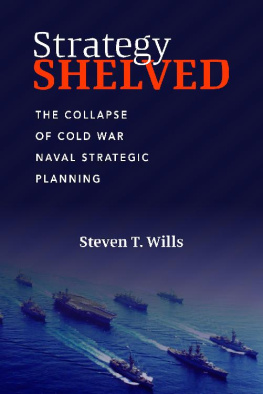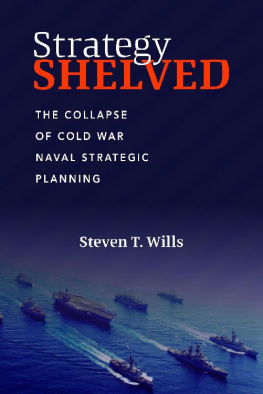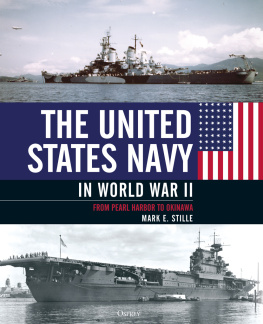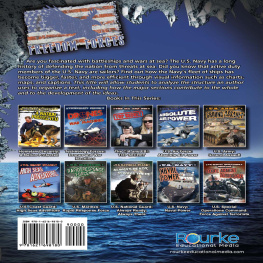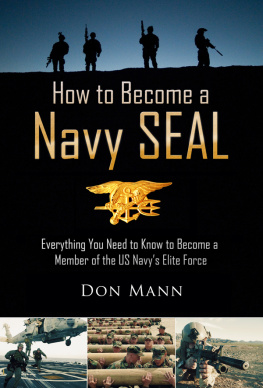
TITLES IN THE SERIES

Progressives in Navy Blue
Maritime Strategy, American Empire, and the Transformation of U.S. Naval Identity, 18731898
Studies in Naval History and Sea Power
Christopher M. Bell and James C. Bradford, editors

Studies in Naval History and Sea Power advances our understanding of sea power and its role in global security by publishing significant new scholarship on navies and naval affairs. The series presents specialists in naval history, as well as students of sea power, with works that cover the role of the worlds naval powers, from the ancient world to the navies and coast guards of today. The works in Studies in Naval History and Sea Power examine all aspects of navies and conflict at sea, including naval operations, strategy, and tactics, as well as the intersections of sea power and diplomacy, navies and technology, sea services and civilian societies, and the financing and administration of seagoing military forces.

This book has been brought to publication with the generous assistance of Edward S. and Joyce I. Miller.
Naval Institute Press
291 Wood Road
Annapolis, MD 21402
2018 by Trent Hone
All rights reserved. No part of this book may be reproduced or utilized in any form or by any means, electronic or mechanical, including photocopying and recording, or by any information storage and retrieval system, without permission in writing from the publisher.
Library of Congress Cataloging-in-Publication Data
Names: Hone, Trent, author.
Title: Learning war: the evolution of fighting doctrine in the U.S. Navy, 18981945 / Trent Hone.
Description: Annapolis, Maryland: Naval Institute Press, [2018] | Series: Studies in naval history and sea power | Includes bibliographical references and index.
Identifiers: LCCN 2018005736 (print) | LCCN 2018016010 (ebook) | ISBN 9781682472941 (ebook)
Subjects: LCSH: Naval tacticsStudy and teachingUnited States. | Military doctrineUnited StatesHistory20th century. | United States. NavyHistory20th century. | United States. NavyOfficersTraining of. | Naval strategyHistory20th century. | Naval tacticsHistory20th century.
Classification: LCC V169 (ebook) | LCC V169 .H66 2018 (print) | DDC 359.4/20973dc23
LC record available at https://lccn.loc.gov/2018005736
Maps created by Lauren S. Hillman.

 Print editions meet the requirements of ANSI/NISO z39.48-1992 (Permanence of Paper).
Print editions meet the requirements of ANSI/NISO z39.48-1992 (Permanence of Paper).
26 25 24 23 22 21 20 19 18 9 8 7 6 5 4 3 2 1
First printing
For Eleanor Zelliot
who taught me that history never ends

Table of Contents
Guide
CONTENTS
MAPS
FIGURES
TABLES
War is the acme endeavor of man.
Bradley A. Fiske, 1916
O n the evening of 7 December 1941, the core of the U.S. Navys Pacific Fleetits battle linewas sitting in the mud at the bottom of Pearl Harbor. Prewar plans were shattered. For seven months, the Japanese held the initiative in the Pacific, seizing positions from the Aleutians to Singapore and creating a strong defensive perimeter. Yet by the following Decemberjust a year laterAdm. Chester W. Nimitz, the Pacific Fleets new commander, had wrested the initiative from the Japanese in the Guadalcanal campaign and begun advancing in the South Pacific. A year after that, in November 1943, the Central Pacific offensive began in the Gilbert Islands. It would destroy the remnants of the Imperial Japanese Navy (IJN) and take the Pacific Fleet to Japans shores.
The Pacific Fleets success raises a series of questions:
How did it recover so quickly from the Pearl Harbor attack?
How did it seize the initiative from the Japanese without its battle line?
How did it transform from a centralized battle fleet to a collection of carrier task groups?
How did these task groups break through Japanese-held island groups, defeat the IJN, and win the war in the Pacific?
The traditional answer to these questions is that the shock of Pearl Harbor forced the Navy out of its stodgy conservatism. The devastating strike of Japanese carrier airpower not only sank the battle fleet but forced the Navy to leave behind the gun club philosophy that had dominated its tactical thought in the interwar period (191939). Battleship admirals had failed to appreciate the nature of the technological changes taking place around them, had restricted experimentation, and had inhibited the development of modern approaches; the raid on Pearl Harbor freed the Navy of its shackles. It is a compelling narrative that has appeared in popular histories, authoritative analyses, and rigorously researched articles. It is also incorrect.
The true story of how the Navy rapidly transformed is a remarkable one of innovative change in the face of dynamic technologies, budgetary constraints, and wartime stress. In the early years of the twentieth century, the Navy transitioned from a traditional institution to a modern, professional organization. This change was triggered by a new concept of American naval power and a revised view of the role of a modern naval officer. New approaches to officer education and new organizational structures followed, along with processes for experimenting with new ideas, gathering feedback from the experience, and continually improving. These processes were core aspects of the Navy; as officers worked to understand how best to coordinate a modern fleet in combat, they collaboratively refined their tactics and kept their minds open to the possibility of new approaches, triggering a series of innovations.
Throughout this process, the Navy of the early twentieth century demonstrated an ability to learn, innovate, and evolve that places it at the forefront of modern ideas regarding management, organizational structure, and innovation. Numerous theories have been advanced about how best to foster sustained organizational learning. Over a century ago, the Navy introduced a successful approach to harnessing new technologies advantageously in an extremely dynamic environment. It conducted regular experiments, engaged in cycles of learning, and continuously improved. During World War II, the pace of these cycles accelerated, and the Navy rapidly transformed. Victory in the Pacific was a result of the Navys ability to foster evolutionary changes in its doctrine, an ability that had been developed and refined over prior decades.
This book describes the development of that ability. It charts the evolution of the Navys surface-warfare doctrine during the first half of the twentieth century. Chapters 1 through 4 discuss the development of that doctrine from the end of the Spanish-American War through the beginning of World War II; they describe the Navys transformation from a traditional organization to a modern one and the emergence within it of a learning system. In these years, the Navy developed its first coherent tactical doctrine, introduced processes to refine it, and institutionalized learning approaches. Then, during the interwar period, the Navy exploited them.




